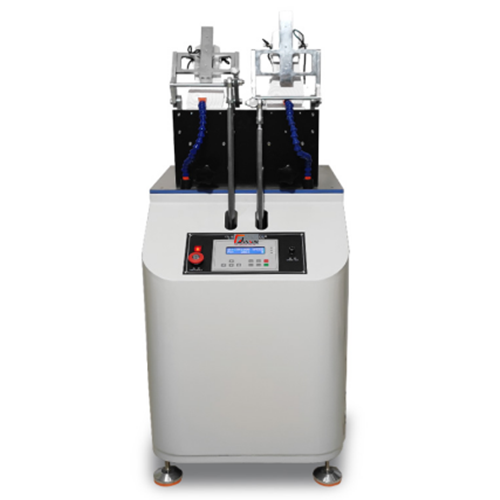G651 national standard shoe bending tester
G651 National Standard Shoe Bending Tester: Compliance and Durability Testing
The G651 national standard shoe bending tester is designed to evaluate the flex resistance of shoe soles under repeated bending cycles, ensuring compliance with Chinese footwear regulations. This article outlines applicable standards, key parameters, operating principles, and test methodologies for manufacturers seeking to validate product quality.
Applicable Standards
The tester adheres to the Chinese national standard:
- GB/T 20991-2007 (Test method for flexing resistance of footwear soles)
Main Parameters
| Parameter | Specification |
|---|---|
| Bending Angle | 0-90° (adjustable) |
| Bending Frequency | 30-60 cycles/min |
| Load Force | 50-200N (programmable) |
| Cycle Counter | 0-999,999 times |
| Power Supply | AC 220V/50Hz |

Working Principle
The tester uses a motor-driven eccentric wheel mechanism to apply cyclic bending forces to the shoe sole. A load cell monitors applied force, while displacement sensors track bending angles. The system automatically stops at preset cycle limits or when sole cracks exceed predefined thresholds.
Test Principle
- Sample Preparation: Secure the shoe to the fixture, aligning the flex line with the tester’s axis.
- Parameter Setup: Define load force, bending angle, and test duration via the control panel.
- Automated Testing: The machine flexes the shoe repeatedly, recording real-time force and displacement data.
- Result Analysis: Assess sole cracking, energy loss, and structural integrity to determine compliance with GB/T 20991-2007.
This tester enables manufacturers to ensure footwear meets national quality standards, reducing product defects and enhancing brand credibility. Its precision and compliance with Chinese regulations make it a critical tool for domestic footwear production and quality control.

